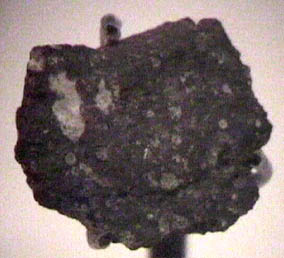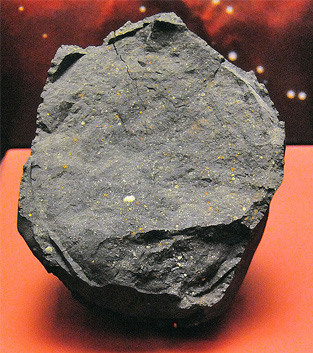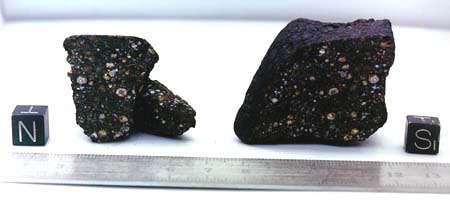Classification of Meteorites
Meteorites are traditionally classified as irons, stones, and stony-irons. The "irons" are composed of nearly pure metallic nickel-iron. This makes it easy to classify them as extraterrestrial in origin because pure metallic iron almost never occurs naturally on the Earth - it is in the form of some oxide. Fraknoi, et al. comment " if you ever come across a chunk of metallic iron, it is sure to be either man-made or a meteorite." The stony meteorites are more common but harder to identify, often requiring isotopic analysis to be sure. The stony-irons, mixtures of metallic iron and stone, are much rarer.
Another important characterization of the meteorites is as differentiated or undifferentiated meteorites. The differentiated meteorites, including the irons and stony-irons, appear to be fragments of larger bodies for which separation according to density took place while they were in the molten state after formation. As a larger body cools, the more dense materials sink toward the center. This gives an important role to the undifferentiated stony meteorites, since they can be presumed to be from smaller bodies which cooled and solidified too quickly for the differentiation to take place. These primitive meteorites are then our best picture of the early history of the solar system since they have had fewer influences for change over the age of the solar system.
The stony meteorites are by far the most numerous of the meteorites. They are commonly described as gray silicates with some metallic grains mixed in.
Of particular importance are the stony meteorites collected in Antarctica from the ice and they have been used for radioactive dating, giving us perhaps our best indication of the age of the solar system.
A different group of meteorites is the carbonaceous meteorites, dark rocks containing a significant amount of carbon.
The vast majority of meteorites are thought to come from the asteroid belt, but a number have been identified as coming from either the Moon or Mars.
The meteorites are rich sources of information about the solar system. Two of the most famous meteorites, the Allende meteorite and the Murchison meteorite, have been studied intensively for clues about solar system history.
|


